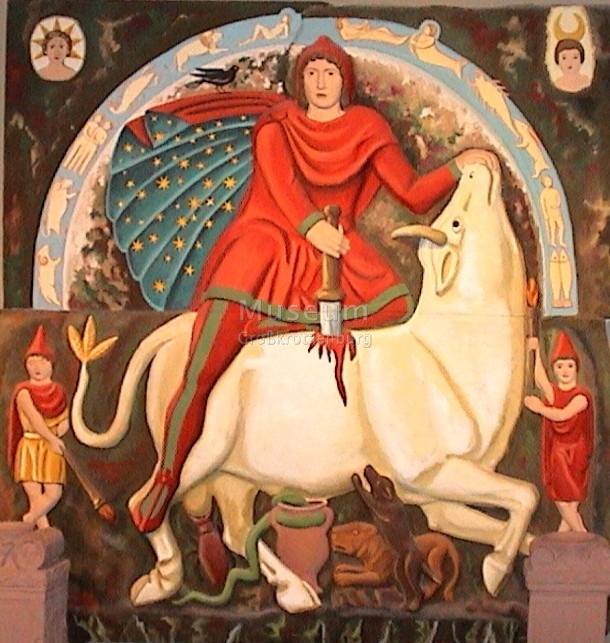|
Professor Giorgio Diaz de Santillana (1902-1974)
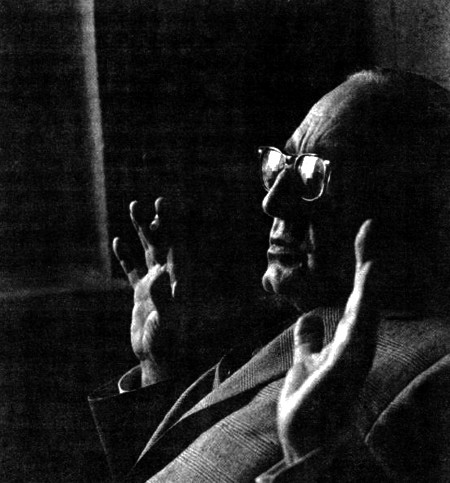
Giorgio de Santillana - Late 1960's |
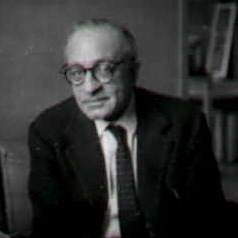
Giorgio de Santillana ca. 1968 |
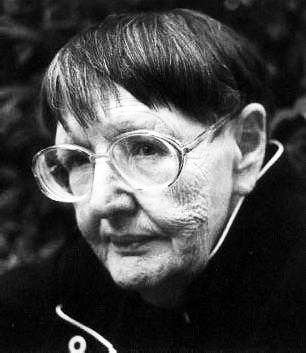
Hertha von Dechend - ca. 1990 |
Giorgio Diaz de Santillana was born on 30 May 1902 in Rome,
Italy; he died on 8 June 1974 in Dade County, Florida. Giorgio came to the
United States from Italy, arriving on the SS AQUITANIA on 14 April 1936 (see passenger manifest shown below). During much of World War II (1943-1945), he
served in the United States Army as a war correspondent for the Stars and
Stripes Newspaper. He became a naturalized citizen of the United States on
26 March 1945, presumably as a result of his military service (see certificate
shown below). In September
1948, he married Dorothy Hancock Tilton (1904-1980). He and his wife lived most
of their married life in a Boston suburb, the town of Beverly, Essex County,
Massachusetts. His academic career at the Massachusetts Institute of Technology
(MIT), commenced in 1941 when he joined the Faculty as an Instructor. In 1942,
he became an Assistant Professor. After his tour of duty in the Army
(1943-1945), he returned to MIT and was made an Associate Professor in 1948; in
1954, he was made a full Professor of the History of Science in the School of
Humanities at MIT.

Naturalization Certificate for Giorgio Diaz de Santillana |
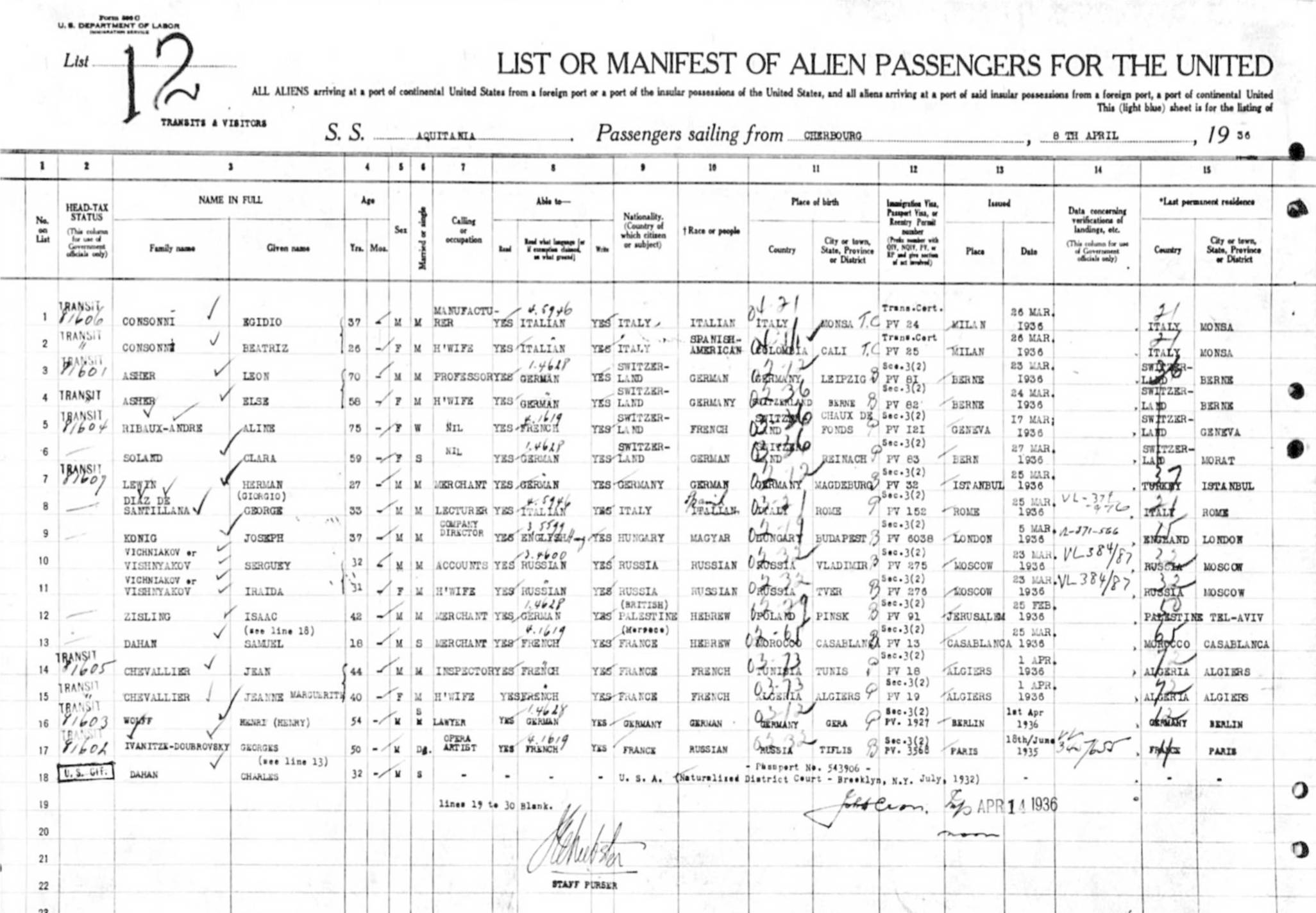
Passenger Manifest for Giorgio
Diaz de Santillana, dated 8 April 1936 |
He was a senior professor of
Humanities at MIT, when I was an
undergraduate there at the beginning of the 1960's. It was Professor de
Santillana, an internationally
recognized authority concerning the history of science, who introduced me to his
profound epistemological ideas concerning the connection between astronomical
science and the great mythological tales of ancient civilizations.
In 1969, he and a younger colleague, Dr. Hertha von Dechend
(1915-2001), published a book entitled: Hamlet's Mill, An Essay on Myth and
the Frame of Time. Although it took a number of years to fully enter the
consciousness of Academia, this book revolutionized our understanding of the
connection between the mythological stories of Pharaonic Egypt, Babylon, Greece,
Christianity, etc. and the ancient observations pertaining to the stars, planets
and, most notably, the 26,000 year precession of the equinoxes.
| Group photograph
made during the retirement ceremonies for Harvard University physics
professors Percy Williams Bridgman and Philipp Frank. Photo was
taken in the Harvard Faculty Club in May 1956.
From Left to Right --
First row: Gerald Holton, I. I. Rabi, Detley Bronk, P. W. Bridgman,
Philipp Frank, W. V. Quine, Giorgio de
Santillana of MIT. Second row: Charles Morris, Nathan M.
Pusey - President of Harvard University, J. Robert Oppenheimer, Dean
John Burchard of the MIT School of Humanities, Perry Miller, Howard
Mumford Jones, and Hartford Brown of Brown University. |
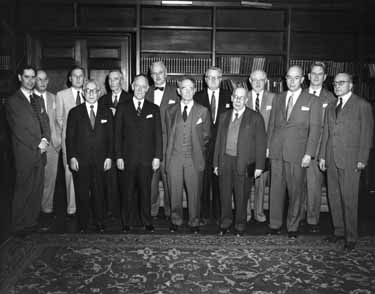 |
Obituary of Professor de Santillana
A brief biographical sketch of Professor de Santillana by one
of his close friends, Professor Nathan Sivin, is presented below. This sketch is
an excerpt from Sivin's obituary of de Santillana which was published in the
professional journal of the history of science, Isis, Volume 67 (1976),
pages 439-443:
Giorgio Diaz
de Santillana was born in Rome in 1902 and there received a degree in physics
from the university in 1925. After two years of graduate work in philosophy in
Paris and two years in the physics department of the University of Milan, he was
called back to the University of Rome by Federigo Enriqucs, Professor of Higher
Geometry, to help organize a school for the History of Science. As his assistant
de Santillana taught history and philosophy of science and collaborated with him
on a history of scientific thought with special attention to antiquity.
In 1935 de
Santillana returned to Paris for a series of lectures at the Sorbonne and
conducted colloquia in Brussels and Pontigny. He arrived in the United States in
1936. From 1937 to 1938 he was an instructor in philosophy of science at the New
School for Social Research and then became a visiting lecturer at Harvard
University. He joined the Massachusetts Institute of Technology staff in 1941 as
instructor in the Department of English and History (now the Department of
Humanities). He was made Assistant Professor of the History of Science in 1942,
Associate Professor of the History and Philosophy of Science in 1948, and
Professor in 1954. ...
Giorgio
de Santillana made no bones about being a scientific rationalist, but what he
said and how he said it had little in common with the sere and cramped academism
of many of his contemporaries ... The
conviction that the deepest commitments of science were the earliest led him,
notably in The Origins of Scientific Thought (1961), to find all the
fundamental strategies of Western thought about nature worked out in the
Presocratics. He was confident that the timeless fellowship to which Pythagoras,
Archimedes and Niels Bohr belonged could be traced farther back still. His last
book, Hamlet's Mill (1969), the fruit of long collaboration with
Hertha von Dechend of Frankfurt, was an end run around those scholarly
custodians of the history of early astronomy who consider myths best ignored and
those ethnologists who consider astronomy best ignored, to arouse public
enthusiasm for exploration into the astronomical content of myth. But the book
went to press when the last energies he could direct were exhausted, and the
exploration will have to be continued by others.
The Crime
of Galileo (1955) earned him not only great public acclaim but considerable
reprobation. As a man of conscience in Mussolini's Italy he had learned to
recognize the control of thought in the name of security (as defined out of
imperative needs for public docility and administrative convenience). He was
documenting a familiar pattern in the events of 1616 and 1633, when sensible and
experienced men agreed in the interest of a "higher freedom" that the option to
choose between ideas should not be left to the individual. In the heyday of
Senator Joseph McCarthy there were many eminent historians who, having chosen
prudent silence, came to believe that Galileo might well have done the same; and
there were zealous spokesmen for the Church for whom The Crime of Galileo
was bad public relations, and who hoped to keep the reconstruction of those
fateful episodes on a properly elevated philosophic and theological plane. It
took nearly ten years for one of the most scholarly Jesuit historians to clear
the air by remarking in a public forum that, given a nuisance like Galileo
amidst the predicaments of the Counter-Reformation, had he been Pope he would
have done exactly as Urban Viii did.
Of the many
prizes Giorgio received, none pleased him more than the national award given his
short article "Galileo and Oppenheimer." It was published in The Reporter
in 1957, at a time when nothing could have been further from the concerns of
most historians of science than the scholarly study of current events. The
article sketched a modern parallel to the determination of Urban "to break once
and for all what to him was the incomprehensible arrogance of the scientific
mind," and to the ultimate consequences of his pride, the further weakening of
the institutions he was trying to defend.
Through these
writings and in fact through all of Giorgio's books and articles in English,
French and Italian (the language was always chosen to seek out the readership
capable of responding to the challenge) there runs that old instinct of the
humanist that has hardly survived in this age of disciplinary specialization:
"My feeling is that history deals with intensely live issues and should remain
current, as the modern saying is ... There are too many important things
to be dealt with to waste our time on erudite trifles." That was said by a man
whose erudition was enormous, but who would apply it to no end less weighty than
keeping the grand traditions of science alive, defending "the actual, original
ever-living spirit of cosmology against the present vogue of positivism,
operationalism, and their like." He saw a familiarity with the most adventurous,
most engaged, and most original thinkers of the past as the indispensable guide
to developing in their successors "the science of strategy and the art of making
decisions."
I knew
Giorgio for only the last twenty-five years of his life. When I first wandered
into his office I discovered to my delight that he was always ready for a
serious conversation. He never descended from the highest level of discourse of
which he was capable. I was one of a number of equally green undergraduates who
studied, conversed, and attended his classes year after year, drawn on by that
brilliance, eloquence, and charming vanity. We were determined to reach a depth
of comprehension that would let us contribute as well as take. Not that we were
ever treated as less than conversational equals, but we knew how much was going
over our heads. One of our deepest satisfactions -- I speak for people who kept
dropping in for decades -- was gradually to understand the coherence of perception
and value behind Giorgio's ideas and intuitions and to realize that our pains
had been well rewarded. None of us could be called disciples. Giorgio did not
encourage that ambiguous filiality that discourages some students from
disagreeing with their teachers and at the same time drives them to concoct
devious strategies for defining their own intellectual identities.
As a teacher
Giorgio was not one who thought of the humanities as an enclave braced and
fortified against the onslaughts of technological culture. If science could be
misused to limit human freedom, it never occurred to him to deny the same power
to poetry. His version of humanism -- with which Galileo and Giordano Bruno would
have felt at home -- enlisted science and poetry against a common enemy: the
mindless instrumentalism that scoffs at values and recognizes no issues and no
constraints, reduces "the study of man ... to consumer conditioning, personnel
relations, Corporation or Department policy." His office
and classroom doors were always open. Those who passed in and out most often
were among the most capacious and independent minds MIT has nurtured -- Norbert
Wiener, Jerome Lettvin, Warren McCulloch, Philip Morrison, and Walter Pitts, to
name a few. ...
Close Friends of Giorgio
de Santillana
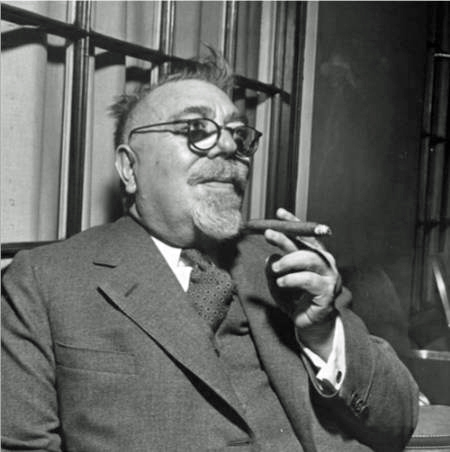
Norbert Wiener (1894-1964) |
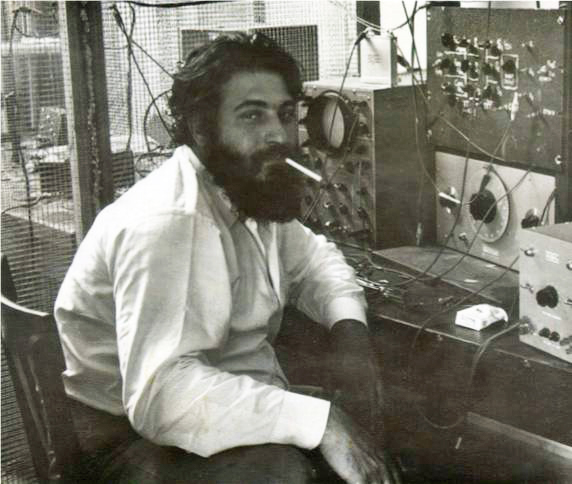
Jerome Lettvin (born 1920) |
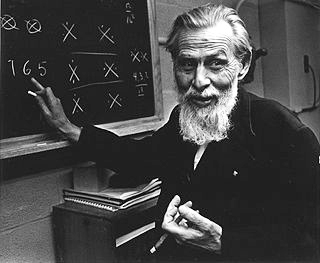
Warren McCulloch (1898-1969) |
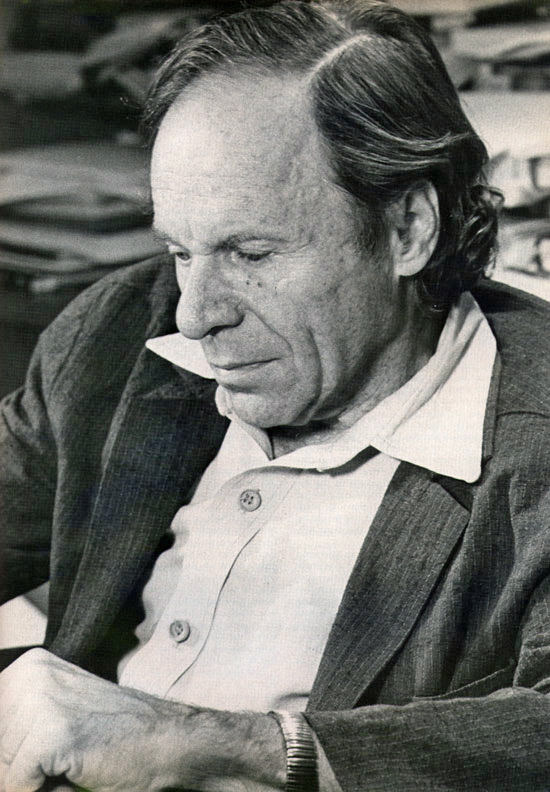
Philip Morrison (1915-2005) |
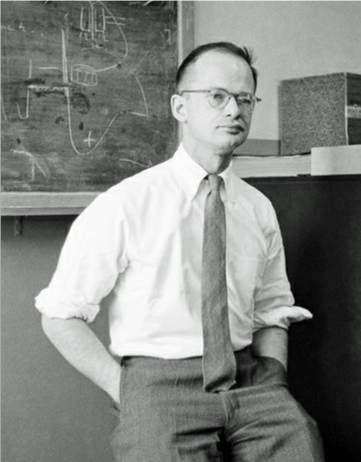
Walter Pitts (1923-1969) |
The five gentlemen whose photographs appear
above were all good friends of Giorgio de Santillana and of each other.
1)
Norbert
Wiener
was a child prodigy; in 1913, he acquired a Ph.d. from Harvard in
mathematics at only 18 years of age.
In 1919, he joined the faculty of MIT, becoming a full
professor of mathematics in 1931. During World War II, his work on the
automatic aiming and firing of anti-aircraft guns caused Wiener to study
Communication
Theory and eventually formulate his theory of
Cybernetics in 1948.
After the war, his fame enabled MIT to recruit a research team in
Cognitive Science,
composed of researchers in neuropsychology, mathematics and biophysics of
the nervous system; these researchers included Warren McCulloch and Walter
Pitts. All of these men later made pioneering contributions to Computer
Science and Artificial Intelligence (AI).
Wiener and Giorgio de Santillana were close
friends at MIT during the 1940s and 1950s, until Norbert's retirement in
1960. They enjoyed discussing topics related to the philosophy of science
and mathematics with each other. On a lighter note, Giorgio was an expert on
Tarot card reading and Wiener loved to have his fortune told.
2)
Jerome Lettvin
was a cognitive scientist and Professor of Electrical
and Bioengineering and Communications Physiology at the
Massachusetts Institute of Technology (MIT). He is best known as the
principal author of the 1959 paper: "What the frog's eye tells the frog's
brain" - one of the most cited papers in the
Science Citation Index. He wrote the paper with the assistance of
Humberto Maturana,
Warren McCulloch and Walter Pitts. A graduate of the University of Illinois
Medical School, Lettvin practiced Psychiatry in Illinois and later in
Boston. In 1951, at the urging of Norbert Wiener, both Lettvin and Warren
McCulloch, joined the faculty at MIT.
Through their association with Norbert Wiener,
both Lettvin and Warren McCulloch met and became a close friends of Giorgio
de Santillana. Lettvin had the
following reminiscence concerning Giorgio de Santillana and Norbert Wiener:
One of my best friends at MIT was Giorgio
de Santillana, the historian of ideas. He was a most learned and kindly man with
a mordant wit. Walter, Wiener, and I often hung out at his office. Giorgio was a
past-master at fortune-telling with the Tarot. Wiener loved having his fortune
told. Giorgio vainly tried to persuade him that the Tarot should be a rare and
sometime thing to be used only in crisis, but Wiener would have none of such
excuses. For example, Walter and I used it when we started a new experimental
venture. There's nothing mystical about it - it brings up, by chance,
associations that you do not ordinarily consider and in that way serves to break
the constraints that hemmed your thinking. It is a charming way of introducing
overlooked contingencies. So every month or so, Giorgio would give in to Wiener
and come up with a fortune together with a complex character analysis. At the
end of the reading, Wiener would exclaim "But that's not me, that's X (or Y or
Z)" where X, Y, or Z were fellow mathematicians. Giorgio would shrug and say
"You may have been thinking of them when you picked the card."
-- The History of Neuroscience in
Autobiography, Volume 2 (published 1998), Edited by Larry R. Squire, pages
234-235.
In an
interview given in 1994, Jerry Lettvin told the story of the time
that de Santillana read the Tarot for Lettvin's wife Maggie:
Let me describe Maggie for you. She
was one of the most beautiful women I ever met, in both appearance and
character, utterly unpretentious and with great native intelligence. My
family looked down on her, my friends did not. She had had only a high
school education, and my mother stayed angry for years.
One evening, shortly after we came to
MIT, we visited Giorgio de Santillana, the historian of ideas and an old
friend from my student days, at MIT. Giorgio was an adept at interpreting
the Tarot. Scarcely a month would go by but Wiener would insist on having
his Tarot told. Giorgio vainly explained that the Tarot should be consulted
only at times of important choice. Wiener claimed he always had such a
crisis and needed counsel. At any rate Giorgio was charmed by Maggie and
offered to read the Tarot for her. She was now about twenty-five. He read
the cards with a faint air of disbelief. They told that by age forty she
would become a figure of renown, an author and an innovator. Maggie still
remembers that evening with some awe, for all came true.
In her early thirties, after we had
forged our three kids she was back-ended by a hit-and-run driver. For months
she could scarcely lift here arms. Refusing surgery, she studied Gray's
Anatomy and worked out what sort of mechanical regimen would restore her.
Recovery was slow but steady, and within a year she was symptom-free. Others
came to her for their mechanical disabilities and she worked out from here
newly gained knowledge of anatomy and kinematics some remarkably successful
conservative treatment. She charged nothing, was only interested in helping.
Several students, after being helped, persuaded her to hold fitness classes
at MIT. Within a year there were about two hundred people per day taking
those classes. Then Channel 4 in Boston picked her up, then PBS. For the
next seventeen years her program,
Maggie and the Beautiful Machine
(everybody's body), was a PBS standby and her MIT classes stayed crowded.
She published four books in her forty's and gloried in the fact that medical
practitioners approved of her approach. One book is still in print after
twenty-five years. Now she is beginning a new career on the Web, giving
counsel on how to relieve back pain without medicaments.
The only pity is that Giorgio could
not know that all this happened. He began failing before her ascent picked
up steam.
3)
Warren
McCulloch was a Neurophysiologist and
Cybernetician. His work helped to establish the Neural Network theory of the
brain in a number of classic papers: including "A Logical Calculus of the
Ideas Immanent in Nervous Activity" (1943) and "How We Know Universals: The
Perception of Auditory and Visual Forms" (1947). From 1952 he worked
at the MIT Research Laboratory of Electronics, working primarily on neural
network modeling. His team examined the visual system of the frog in
consideration of McCulloch's 1947 paper, discovering that the eye provides
the brain with information that is already, to a degree, organized and
interpreted, instead of simply transmitting an image. The result of that
research was summarized in the paper he authored with Jerome Lettvin,
Humberto Maturana
and Walter Pitts entitled: "What the frog's eye tells the frog's brain"
(1959).
4)
Philip Morrison
was a theoretical physicist and astrophysicist. In
1940, he earned his Ph.D. in theoretical physics at the University of
California, Berkeley, under the supervision of
J. Robert
Oppenheimer. In 1942 he joined the
Manhattan Project
as group leader and physicist at the laboratories of the University of
Chicago and Los Alamos. In July 1945, he was an eyewitness to the
Trinity Atomic Bomb test and helped to transport its plutonium core to
the test site. From 1946 until 1964, Morrison was on the faculty of Cornell
University working primarily in the field of theoretical astrophysics. In 1964 he joined the MIT faculty as a professor of Physics,
becoming an Institute Professor in 1973.
After coming to MIT, Philip Morrison became a
good friend of Giorgio De Santillana. When Giorgio's last book was
published, Hamlet's Mill, Morrison did a book review that was
published in the November 1969 issue of Scientific American. It was
one of the few sympathetic reviews made of that book by academics. Morrison
made this summary statement concerning the book:
The book is polemic, even cocky; it
will make a tempest in the inkpots. It nonetheless has the ring of noble
metal, although it is only a bent key to the first of many gates.
5)
Walter Pitts
was an
autodidact who basically taught himself
logic and mathematics; he was also able to read a fair number of languages,
including Greek and Latin. Like Norbert Wiener, he was a childhood prodigy
and a genius of the highest order. At the age of 12, he spent three days
in a library reading
Principia
Mathematica and sent a letter to
Bertrand Russell
at Cambridge University pointing out what he considered to be serious
problems with the first volume. Russell was appreciative and invited him to
study in England. Although this offer was not taken up, Pitts decided to become a
logician. In 1938, Pitts ran away from home at the age of 15 to attend
Russell's lectures at the
University of
Chicago. He stayed there attending lectures, without registering as a
student. While at Chicago in 1938, he met Jerome Lettvin, who was actually a
registered student there, and the two became good friends. Pitts also met
the logician Rudolf
Carnap at Chicago by walking into his office and presenting him with an
annotated copy of Carnap's recent book on logic. Carnap was so impressed by
Pitt's understanding of advanced logic that he arranged for Pitts to be
given a menial job at the university. Pitts at that time was homeless and
without income.
Later Warren McCulloch arrived at the University of
Chicago; in early 1942, he invited Pitts, who was still homeless,
and Jerome Lettvin to live with his family. In the evenings
McCulloch and Pitts discussed many topics of mutual interest. Pitts
was familiar with the work of the 17th century philosopher
Gottfried
Leibniz on computing and they considered the question of whether
the nervous system could be considered a kind of universal computing
device as described by Leibniz. This led to their seminal paper: "A
Logical Calculus of Ideas Immanent in Nervous Activity" (1943). This
paper proposed the first mathematical model of a Neural Network. The
unit of this model, a simple formalized neuron, is still the
standard of reference in the field of neural networks. It is often
called a
McCulloch–Pitts Neuron.In 1943, Jerry Lettvin
introduced Pitts to the mathematician Norbert Wiener, who was in
need of an assistant. Their first meeting went so well that Pitts
moved to Cambridge to work with Wiener at MIT. While at MIT, in
1951,
Walter collaborated with Giorgio
de Santillana in writing an
article entitled: "Philolaus in Limbo: or,
What happened to the
Pythagoreans" for Isis, the
academic journal for the history of science. Also in 1951, Norbert
Wiener convinced MIT to establish a brain research group composed of
mathematicians and physiologists of the nervous system. This group
included Pitts, Lettvin and McCulloch. Pitts wrote a lengthy thesis on the properties
of neural nets connected in three dimensions. Jerry Lettvin
described Pitts as being "in no uncertain sense the genius of the
group … when you asked him a question, you would get back a whole
textbook."
Although a genius, Pitts was also an eccentric and very
private person. He refused all offers of advanced degrees or
official positions at MIT because his name would then become known
to the public. Pitts was devoted to the pure and total life of the
mind, believing it to be superior to a life of more complicated
relationships with people. During the 1960s, he became increasingly withdrawn
and more exclusively attached to Warren McCulloch. Perhaps he
sensed that, in some collaborations with other people, he was being
used. Several of the scientists and psychiatrists of the brain
research group thought that Pitts was schizophrenic and potentially
very ill. The prominent psychiatrists who moved in his circles were
more and more baffled by his reclusive shyness and his apparent
personal discomfort. Later Pitts began to live on his own in
Cambridge where he may have experimented with homemade drugs. No one
seems to know much about his later life. He died in 1969 and there
is speculation that he committed suicide.
Dorothy de Santillana (1904-1980)
- Wife of Giorgio
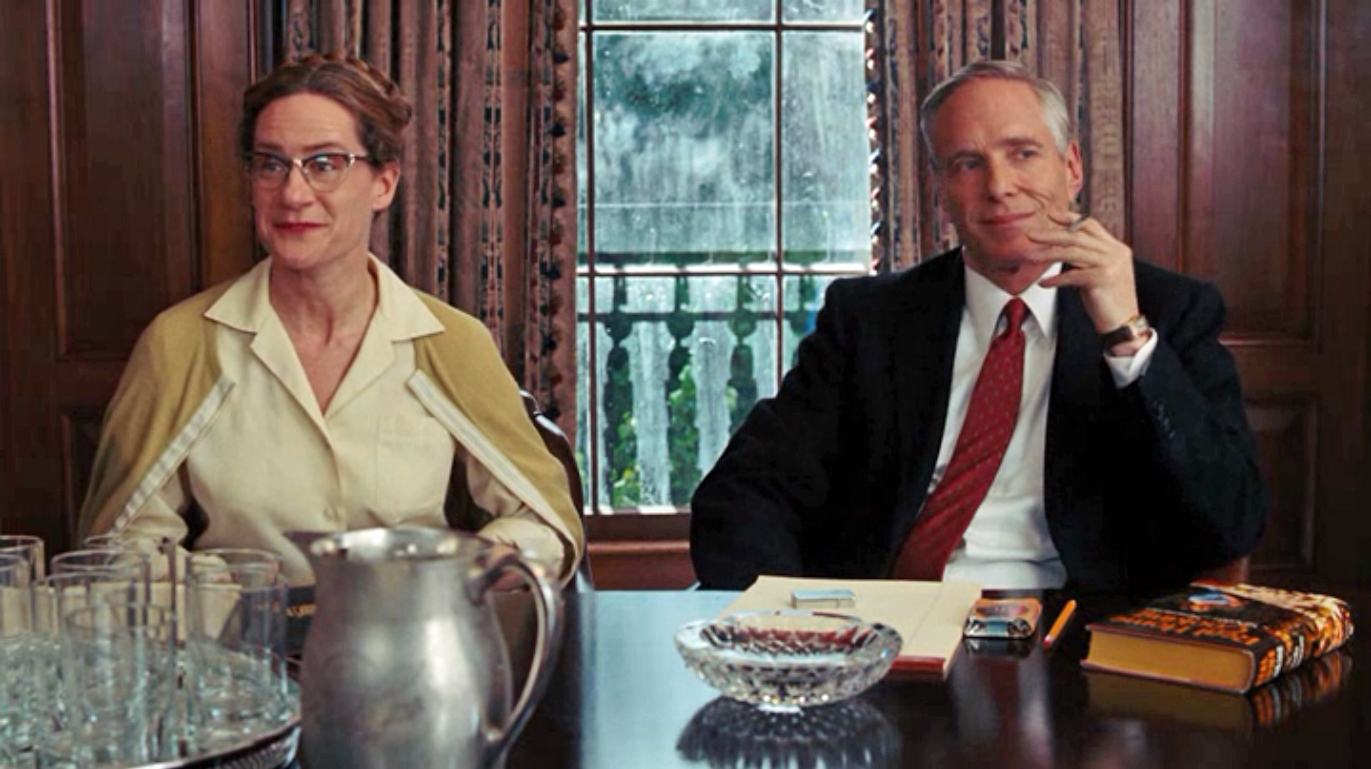
Actress Helen Coxe (shown above) plays
Dorothy de Santillana in the 2009 film Julie & Julia.
Professor de Santillana's wife, Dorothy, is
at least as famous and perhaps more famous than her distinguished husband.
Her full maiden name is Dorothy Hancock Tilton; she was the daughter of John
Hancock Tilton and Elizabeth Worthington Seeley. The Tilton family of
Massachusetts enjoys a very distinguished lineage; indeed, Dorothy is a
direct descendent of John Hancock (1737-1793), first signer of the Declaration of
Independence! I have added a separate page to this website devoted to the
Tilton Family Genealogy.
Dorothy was born on 23 August 1904 in Essex County, Massachusetts; she died
on 19 June 1980 in Beverly, Massachusetts. Her father, John Hancock Tilton
(born on 16 September 1870), was a successful real estate and insurance
broker; Dorothy grew up in a comfortable upper middle class environment in
Haverhill City, a northern suburb of Boston. Dorothy was a graduate of
Radcliffe College
(the women's liberal arts college affiliated with Harvard University), where
she met and married the noted poet
Robert Hillyer
(1895-1961) in 1926. In the 1930 Federal Census, Dorothy, Robert and their
two-year-old son Stanley (1927-1969), are listed in the enumeration for
Windham County, Connecticut; both were identified as being teachers. In
1934, Hillyer received the Pulitzer Prize for Poetry for his book entitled
Collected Verse. Dorothy and Robert divorced in 1943. In 1948,
Dorothy married Giorgio de Santillana.
Dorothy's son, Stanley Hancock Hillyer, was born on 20 May 1927; he
graduated from MIT in 1950. Stanley Hillyer, an executive with the Raytheon
Corporation in Waltham, Massachusetts, died in August 1969 at the age of
only 42.
Dorothy de Santillana was a senior editor at the Boston publishing firm of
Houghton Mifflin
for many years. She had many notable clients including Julia Child and
Garry Wills, among others. Strangely enough, her relationship with cookbook
author, Julia
Child (1912-2004), was of sufficient interest that Dorothy de Santillana is
included as a character in the film about Child's early life entitled:
Julie and Julia
(2009). Her character is played by actress Helen Coxe (see the above
photograph); in the film, Meryl Streep plays Julia Child.
The noted Pulitzer Prize-winning author and
historian, Garry Wills (born 1934), has the following reminiscence
concerning Dorothy:
I ...
got a call from Dorothy de Santillana, an editor at Houghton Mifflin
publishing house in Boston. She ... told me "You have to write a book about
Nixon." I replied that I had now said everything I knew about him - and
besides, I did not think he could win in November. (So much for my political
prescience.) She maintained that what I wrote about America - its conflicted
Cold War liberalism - was what she wanted to hear more of, whether Nixon won
or lost.
I was
not convinced. She said, "Would you at least come up from Baltimore to New
York, and let me go down from Boston, to talk this over?" I did not know
then what I learned later, that Dorothy had a gift for getting the first
book (or the first important one) from writers she set her sights on - she
had edited early books from David Halberstam and Robert Stone. She was
married to the Renaissance historian at MIT, Giorgio de Santillana, and she
had a wide cultural vision, which, at our New York dinner, she fit my
article into. ...
After
taking on the book assignment, I boarded Nixon's campaign plane (a far
bigger deal than the one he was flying in January, when I had first joined
him). ... Dorothy de Santillana read each draft of the book and found me
some extra advances as it grew in bulk. She went to bat for me with other
editors when they tried to kill my title, Nixon Agonistes
- they said no one could pronounce the second word, people would be
intimidated by it, afraid to ask for it in book stores. She pointed out that
two of the most famous poems in the English language were Milton's
Samson Agonistes and Eliot's
Sweeney Agonistes. When the book came
out, she arranged for a launch party at Sardi's in New York, and the senior
publishing board came down from Boston for it.
--
Garry Wills, Outside Looking In: Adventures of an Observer
(published 2010).
Bibliography
The following is a partial list of Professor
de Santillana's literary works available in English; other than Hamlet's
Mill, most are now out of print. The complete text of Hamlet's Mill
is currently (April 2011) available online at the
Phoenix and Turtle web site.
|
